It is wonderful to look around the room and see so many friends and partners: from big telecom companies like Cisco to important financial institutions like JP Morgan and Citi; to partners in food security and global health, including Cargill and GSK.
Twenty years ago, when BSR was founded, a gathering like this one would have only needed a small conference room. But today, we can see that this community has dramatically expanded—in large part thanks to the leadership and vision of BSR.
For two decades, you have helped build the momentum around corporate responsibility—bringing investors, companies, and entrepreneurs together to deliver profitable solutions that build a better world. You’ve worked with software companies to implement their first-ever human rights approach. You’ve worked with agricultural processors to help them improve the sustainability of their supply chains. And you’ve worked with clothing companies to improve factory workers’ health.
Over twenty years, you’ve teamed up with nearly 300 companies around the world. That is a tremendous global reach. But we still have more work to do.
In order to reach the scale and sustainability required to affect real change—to finally solve intractable problems in development—we have to overcome our remaining challenges and encourage a new era of private sector engagement in development. And all of us—businesses and development agencies—will have to take a new approach.
For years, USAID has focused on private sector development in partner countries, becoming a world leader in forming high-impact public-private partnerships.
Through the Global Development Alliance, we’ve formed over 1,600 partnerships with over 3,000 private sector players—leveraging approximately $19 billion in public and private resources, expertise, and technologies. As a result of these strategic interactions, we’ve helped link 10,000 smallholder chickpea farmers in Ethiopia to PEPSICo’s East African supply chain. PEPSI is creating stable demand and increasing the yields of those farmers to make hummus product they can sell. But they’re also using the chickpeas to develop a life-saving, high-energy paste for malnourished children that can save lives in the drought-stricken areas of the Horn of Africa.
As a result of our engagement, Swiss-Re—an industry leader in risk management solutions—is developing affordable, weather-index based insurance mechanisms for smallholder farmers throughout Africa and Asia. These insurance schemes helped more than 600 Northern Kenyan pastoralists weather the worst drought in sixty years.
And as a result of this engagement, in the past year. our Development Credit Authority—which is designed to use loan guarantees to unlock large sources of local capital—approved 38 new partial credit guarantees to mobilize a record $700 million in commercial capital in 23 countries.
All told, this year’s work will mean 140,000 small businesses will soon be able to access local financial. Because of benefits for the families of owners and their workers, these loans translate into more than a million people impacted.
That means Abebaw was able to expand his poultry farm in Mojo, Ethiopia—building his own feed processing plant and constructing an additional barn. And it means Gertrude was able to expand her clothing shop in Dar es Salaam, hiring four new employees, opening a second store, and sourcing her products for more affordable suppliers further away.
These aren’t partnerships for partnerships’ sake. They’re not acts of charity. They’re true market linkages that can deliver profits for companies and deliver economic opportunity in developing countries. And most importantly, that means they’re sustainable. The kind of partnerships that can keep on delivering dividends long after foreign aid is a part of them.
Increasingly, this approach has come to define the way USAID works across the world. An approach that engages far more broadly with the private sector—putting behind us an old reluctance to work together and engaging companies not as wellsprings of corporate charity, but as real partners with an interest in serving the needs of the most vulnerable. An approach that advances a far deeper focus on science, technology, and innovation to dramatically expand the realm of what is possible in development. An approach that delivers far more for developing countries, but demands more from our partners as well.
Perhaps no effort better illustrates this new approach than the New Alliance for Food Security and Nutrition. Last year, as we reviewed our progress in Feed the Future, the President’s global food security initiative, we found that despite the growth of private sector investment in developing countries, almost none of it went to poverty-reducing agricultural development in Africa.
When we reached out to global and local firms, we frequently heard them cite the same barriers to investments: corruption; ineffective policies; and a lack of access to donor programs that could help make projects in developing countries more feasible.
As a result, we started bringing donors, private sector companies, and developing countries together in a new alliance that would expand investment opportunities in African agriculture by matching commitments from the private sector with commitments from African countries to implement serious market oriented reforms.
The premise was simple, but it has dramatic potential when applied at scale. Announced at the G8 at Camp David by President Obama, the New Alliance aims to lift 50 million people in sub-Saharan Africa out of poverty in the next decade.
So far, more than 70 global and local companies—including some in this room—have committed more than $4 billion to expand seed production and distribution, establish small-scale irrigation systems, and source food locally for global supply chains.
In Ethiopia, DuPont is moving forward with their commitment to strengthen their maize value chain, reaching 32,000 smallholder farmers and providing a credit facility for storage dealers.
In Tanzania, a local seed company called TANSEED is developing a new seed package designed for smallholder farmers that will help raise the incomes of one million people.
At the same time, six African countries have developed cooperation frameworks to guide reforms—evidence of which is already beginning to take shape. Tanzania has publically committed to removing its export ban on staple commodities that has in the past been implemented during food emergencies. And just a month ago, we formed a partnership with Ghana’s Ministry of Food and Agriculture and the World Bank to help deliver on three of Ghana’s New Alliance commitments: establishing a land database for investors; creating model lease agreements; and forming clear procedures for channeling investor interest to appropriate government agencies.
We’re excited about the New Alliance, and the model of development that it has helped pioneer. To help us take it to scale across all our work, we were pleased to join Devex in a new partnership to help fill the gap in knowledge sharing around public-private partnerships. Together, we will combine the world’s largest development network—which reaches 500,000 professionals—with USAID’s expertise in engaging the private sector. Whether you are a small business that wants to learn about worthy projects abroad or a large corporation that wants to spur bottom-of-the-pyramid economic activity, to learn more I encourage you to contact Maura O’Neill, our Chief Innovation Officer, who is here today.
I’d like to conclude with a call to action—one that I know this community is uniquely poised to answer. Over the last few months, I’ve had the opportunity to travel around the country and hold business roundtables with entrepreneurs and CEOs from a diverse range of American companies.
In every city—from Miami to Clemson, South Carolina—I’ve heard real recognition and an eagerness to work together to deepen investment and unlock opportunity in the developing world.
In all these conversations, one opportunity has consistently stood out as having perhaps the greatest potential to affect more lives than any other effort. And that’s our work in electronic payments and mobile money. Today, more than 90 percent of the adult population in the developing world is unbanked.
Yet more than 2 billion of these unbanked individual already use mobile phones in deeply innovative ways—from getting real-time market prices on their phone to using mobile apps like iCow that can help dairy farms monitor the feeding schedule and health of their cattle.
There’s an exciting opportunity here for those of us working in this field. Because across our own community, far too many of us still rely heavily on cash for many of our transactions—from companies that pay their producers with cash to development organizations that provide emergency relief cash payments.
If we can move our transactions en mass from cash to mobile payments, we can create the demand that will bring about systemic change. That’s why we came together to build a network called the Better Than Cash Alliance—to accelerate the adoption of electronic payments around the world with an eye to greater gender quality and financial inclusion.
In the Philippines, we’re working with a range of public and private partners to transition 100 companies to e-payroll. And in Malawi, we work with the government to shift 300,000 civil servant salaries from cash to mobile money.
That’s why we’ve forged two new partnerships with Citi and Vodafone and Technoserve to reach a scale in mobile money previously unimaginable. And that’s why we at USAID introduced new language into all of our grants and contracts to ensure our programs are moving out of cash.
As I look across the room, I see companies and corporate leaders who have been at the frontier of impact investments for decades. This is the next frontier—and it will require each of us to make real commitments to change the way we do business.
It won’t be easy—it can be expensive to transition our systems over, and it will take time to build the demand. But we also know the power and impact it can have. In tough, tough settings, we can create environments that are more resistant to corruption and graft; that are more transparent; and that provide opportunities for poor families—and especially women—to have for the very first time a safe place to receive payments, save money, and invest in a formal way.
Ultimately, if we’re going to realize a future with far more countries as partners in trade and development than recipients in aid, we have to bring our partnerships to scale – not only strengthening the futures of millions of the most vulnerable people, but strengthening ours, as well.
Thank you.
Related Speeches
- Remarks by Polly Dunford, Mission Director, USAID Cambodia, Training of Facilitators on the ASEAN SME Academy
- Signing of a Memorandum of Understanding between Power Africa and the Nile Basin Initiative - Remarks by USAID Kenya and East Africa Deputy Mission Director Dr. Tina Dooley-Jones
- Government of Kenya Consultative Workshop on Accelerating Electricity Transmission Infrastructure Development through Public Private Partnerships - Remarks by USAID Kenya and East Africa Mission Director Karen Freeman

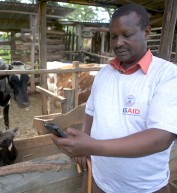
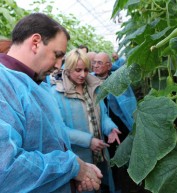
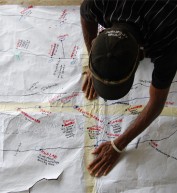
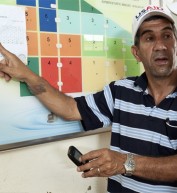

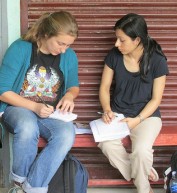
Comment
Make a general inquiry or suggest an improvement.